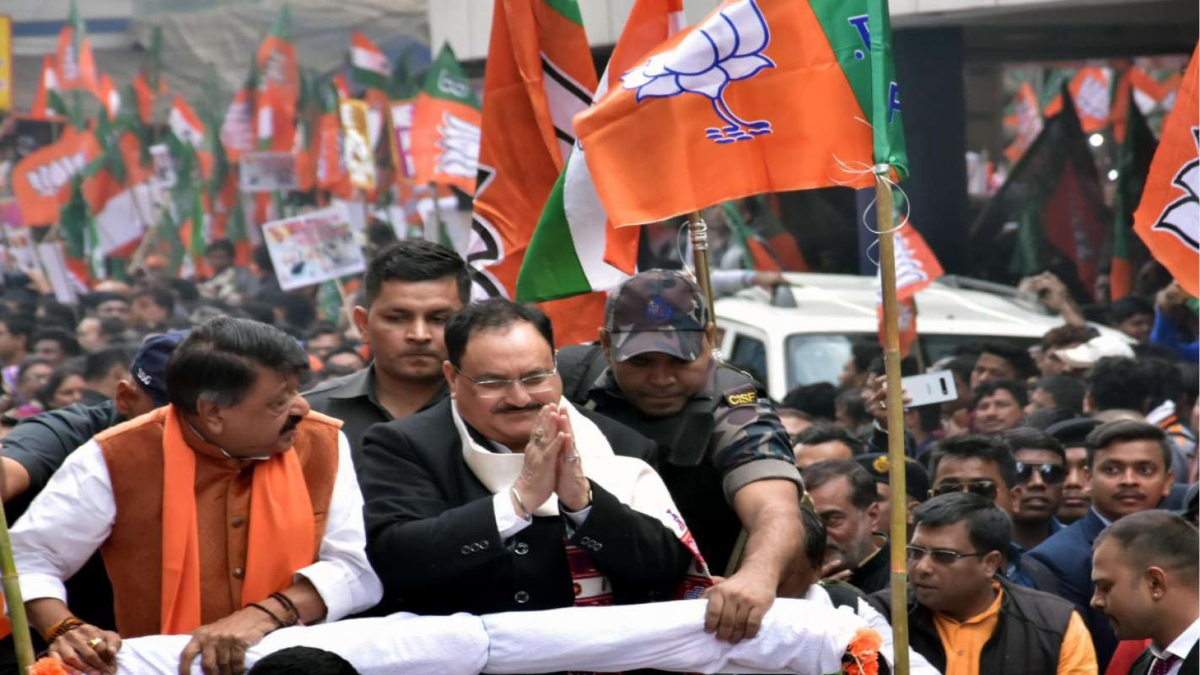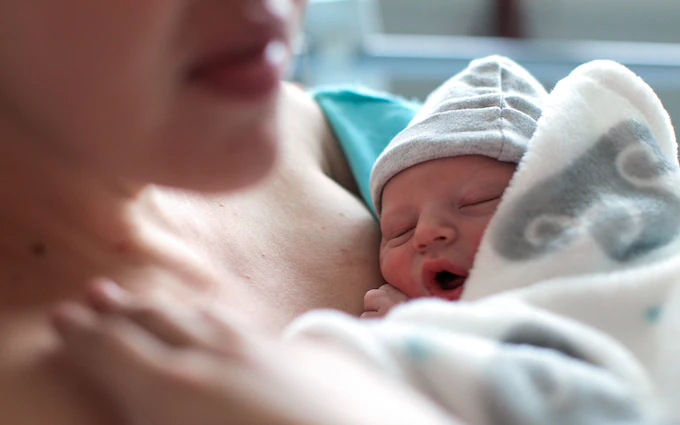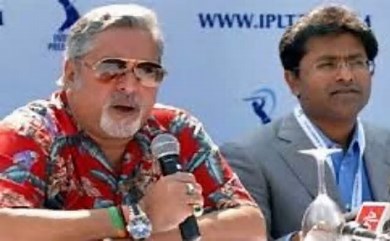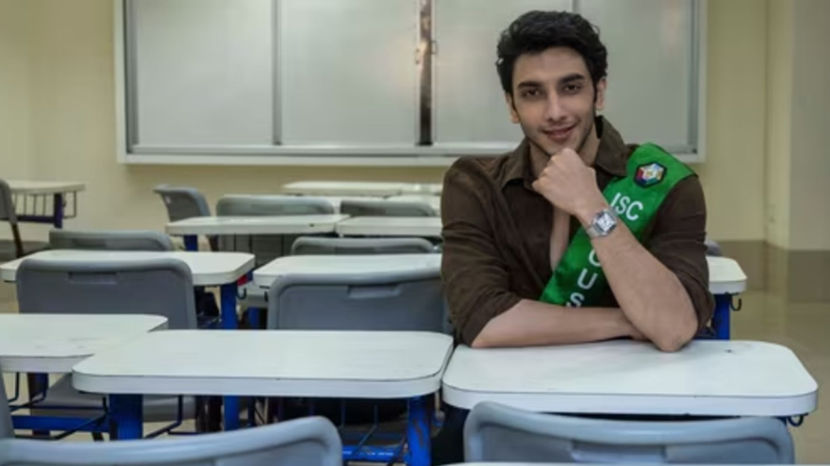
On the way to Diamond Harbour from Kolkata last month, BJP president J.P. Nadda’s convoy was attacked allegedly by Trinamool Congress goons. Stone-pelting and open fights followed soon after. While it made the national headlines, Bengalis dismissed it as a routine pre-election skirmish. That does not come as a surprise considering how Bengal’s encounter with violence runs deep. It has seen far worse days.
The political culture in West Bengal invariably plays out in the colours of conflict and confrontation. Every rally, from a street corner meeting to a mammoth political march to any “not-so-significant” demonstration that makes its way down the narrow lanes of the state’s cities, towns and villages, has the potential to explode in violence.
In West Bengal, the reasons for confrontation have always been strictly political; the clashes are not disguised as caste or communal tensions. The reputation of the state as highly politically conscious has evolved in blood. By 1967, when the Naxalbari movement had become a ‘Spring Thunder’, in the description of the Chinese Communist Party, and adopted Mao Zedong’s slogan that political power grows out of the barrel of a gun, the culture of violence as a means to the end in politics had ingrained itself in West Bengal.
Some events and movements which made a deep impact upon the collective consciousness of Bengal and remain etched in blood are the following:
THE TEBHAGA MOVEMENT
The Tebhaga Movement in 1946-48 was a peasant movement by sharecroppers demanding a two-thirds share of harvested crops. The confrontation between the peasantry and landowners, with the police stepping in to maintain law and order, soon became bloody, and thousands were arrested. It was a face-off between the landowning class and landless tenant farmers, with the Congress on one side and the opposition, including the Communist Party of India, on the other.
EK PAISA ANDOLAN
A fare hike for tram services in Kolkata by one paisa sparked off riots in erstwhile Calcutta in 1953. Trams were set on fire, tracks uprooted, public property vandalised, bombs lobbed, bricks hurled. The police opened fire and several people were killed, and around 4,000 were arrested. Student participation in the riots was notable. The ‘Ek Paisa Andolan’ turned the streets into a war zone. It put the ruling Congress in the dock and helped the Communist movement entrench itself deeper into the political consciousness of the youth and the working population of Kolkata.
THE FOOD MOVEMENT
The Food Movement was a historic protest that continued over several years, highlighting the problems of food insecurity in West Bengal and the rest of the country. The regime in power, the Congress, was blamed by the Left, the Communist Party of India, which later split, giving birth to the Communist Party of India (Marxist), and other parties for failing to provide people with sufficient cheap food grains.
THE NAXALITE MOVEMENT
In the heyday of the Naxalite Movement after 1967, beatings, bombings and killings of perceived class enemies were regular events as was the brutal and repressive response of the state, with the police carrying out raids and picking up hundreds of young students, holding them in custody and carrying out encounter killings and mass murders of alleged Naxalites. The Baranagar, Kashipur and Barasat massacres, where around 100 young men were killed by the police (as some versions of subaltern history point out, aided by the Congress, which was the ruling party then) is a moment that defines the larger narrative of the movement.
In recent episodes of violence, mention must be made of the murder of Forward Bloc leader Hemanta Basu in 1971, who was contesting elections against the CPI(M) and the ruling Congress. It was never clear who killed Basu because the Congress pointed a finger at the CPI(M) even before details of the killing were investigated. After Basu died, Ajit Kumar Biswas was nominated and also killed. It was the most sensational murder in the 1970s. The Left coalition led by the CPI(M), which hoped to win and take over power, failed. In the annals of political violence, this incident is unparalleled.
The savage assault on Mamata Banerjee in 1990 when members of the Democratic Youth Federation of India, the CPI(M)’s organisation, surrounded her and hit her with rods and sticks and injured her skull, is one of the worst incidents of violence in recent years. The CPI(M) tried to explain what happened and failed to do so because the incident catapulted Mamata to the front lines of the political battle against the ruling party in West Bengal. It gave her star power and she became the face of the Congress’ fight back against the Left. It also gave her the ground and the image she needed to emerge as a gutsy leader, who then split from the Congress and formed her own, the Trinamool Congress.
The march to Writers’ Building on 21 July 1996 by Mamata leading the Youth Congress ranks as one of the most violent days in West Bengal’s long history of confrontation. To stop the march from progressing beyond the Section 144 line, the police first used tear gas, then batons, and finally, opened fire. Thirteen young people were killed and 21 July has since been commemorated as Shahid Divas by the TMC.
The series of violent confrontations between the CPI(M) and the TMC over land acquisition for the Tata Motors ‘Nano’ factory in Singur and the aborted land acquisition proposal in Nandigram in Midnapore between 2006 and 2008 revived blurred memories of West Bengal’s turbulent years and its clashes with industry in the 1970s.
According to National Crime Records Bureau (NCRB) data released in 2019, the state of West Bengal tops the country in political murder. Of the 18 recorded around the country in 2018, 12 were from Bengal. West Bengal witnessed at least 43 political killings between January and October in 2020, a period that encompasses the entirety of the Covid-19 lockdown. Of these 43, the BJP says that at least 20 were workers of their party. Most of these cases were reported from North 24 Parganas, Hooghly, Birbhum and Murshidabad districts in southern Bengal, and Cooch Behar in northern Bengal. The reasons behind most are area domination and political rivalry.
But why has the Bengali bhadralok taken a backseat to the agitation-loving, violence-spewing, bloodthirsty proletariat whenever and wherever there is politics?
The complicity of the bureaucracy and the police in sabotaging efforts to bring trouble-mongers to book is a major factor why Bengal fails to curb crime. Add to it is the government’s minority appeasement politics for the sake of electoral gains, ensuring that several anti-social elements belonging to a certain community go scot-free even after committing heinous crimes in the state. Also, curbs on the freedom of the press are also prevalent in West Bengal. The press, which has been rightfully called the Fourth Estate, is often prevented from expressing opinions, reporting full truths and asking pertinent questions.
Widespread unemployment further adds to the mix as joblessness breeds anti-social activities. The lack of industry and private enterprise has rendered lakhs of youths unemployed, who are roped by political factions into various kinds of activities, including unlawful agitation, vandalism and sometimes more serious forms of crime, lured by the promises of an attractive future. Also, because the political protection of the ruling regime means freedom from day-to-day harassment and a first claim to several government schemes and advantages, few are left with the choice to remain apolitical.
Lastly, despite being a highly politically conscious population, Bengal citizens seem to be particularly lackadaisical where their rights and their assertion are concerned. The legal and social rights of citizens who protest against or differ with the ruling regime seem to be in a permanent state of suspension owing to increasing harassment by both state agencies and rowdy elements who often seem to enjoy a tacit legal immunity in spite of the innumerable complaints against them.
So, can we expect a different picture in the upcoming elections in Bengal? Going by the skirmishes already unleashed on the streets of Bengal, it doesn’t seem like history would prefer a very different trajectory this polling season in Bengal. The lynching and consequent death of BJP worker Saikat Bhawal by alleged TMC party workers and the murder of Manish Shukla, an active BJP office bearer, in Barrackpore, do not portend a peaceful and violence-free election in Bengal. However, awareness of the volatility of the very precarious balance that exists between political factions in this state on the part of the police and the Election Commission can help the latter prepare for a more credible law and order system than what exists now.
Ensuring a violence-free election in 2021 is a Herculean task that can be accomplished only with all stakeholders playing their parts honestly and sincerely.
The writer is founder and editor-in-chief of Tribe Tomorrow Network. The views expressed are personal.















